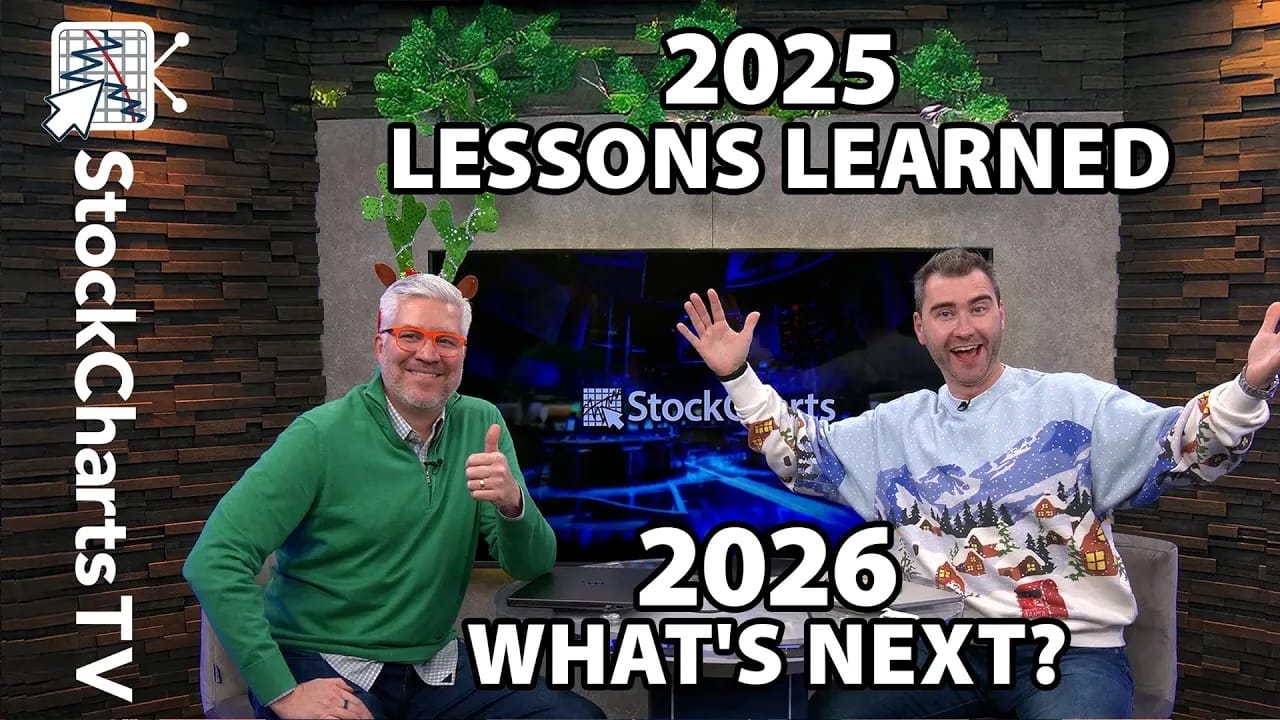FINANCE SECTOR ON VERGE OF P&F TRIPLE BOTTOM BREAKDOWN -- BAR CHART CONFIRMS NEXT SUPPORT FOR XLF -- BANK OF AMERICA, CITIGROUP AND JP MORGAN BREAK SUPPORT -- THE KEY P&F LEVEL FOR NET NEW HIGHS -- USING P&F CHARTS TO GAUGE RELATIVE STRENGTH OR WEAKNESS
FINANCE SECTOR ON VERGE OF P&F TRIPLE BOTTOM BREAKDOWN... Link for todays video. I am on the road so Monday's Market Message is coming a bit early. John Murphy featured the Finance SPDR (XLF) as it tested its 2011 lows on Friday and showed relative weakness. Further to this analysis, note that a break below these lows would forge a Triple Bottom Breakdown on the Point & Figure chart. Point & Figure charts are excellent for determining support and resistance levels. Reversals of rising X-Columns form clear resistance levels and reversals of falling O-Columns form clear support levels. Hence, these charts are ideal for identifying support and resistance breaks. Chart 1 shows XLF with a Quadruple Bottom Breakdown in March and a Triangle Breakdown in May. Based on the Breakout Method, the price objective for this pattern is to 1483. The stock is currently testing the March-April lows with the May decline. A move below these lows would forge a Triple Bottom Breakdown, adding yet another bearish P&F pattern to the list. You can learn more about P&F charts, patterns, price objectives and lingo in our ChartSchool.

(click to view a live version of this chart)
Chart 1
BAR CHART CONFIRMS NEXT SUPPORT FOR XLF... While P&F charts provide clear support/resistance breaks and predefined pattern signals, chartists should also consult bar chars for details that might be missed on the P&F chart. Chart 2 shows broken resistance around 15 marking the next support level. Also notice that a 50-62% retracement of the August-February advance would extend to this area. The indicator window shows XLF relative to the S&P 500 ETF. The finance sector has been underpeforming for at least a year. There was a small window of outperformance in December, but that ended in January and XLF has been lagging the market throughout 2011.

(click to view a live version of this chart)
Chart 2
BANK OF AMERICA, CITIGROUP AND JP MORGAN BREAK SUPPORT... The next three P&F charts are based on 60-minute data to capture the intraday swings. Also note that the scaling method is percentage with one box equal to a 1% move. There are two things to watch on these charts: the support breaks and the current trendlines. Chart 3 shows Bank of America (BAC) with a support break in March and again in April. The red letters/numbers show the beginning of each month. A, B and C represent October, November and December, respectively. The stock also broke the bullish support line (blue) and a new bearish resistance line has been drawn. Prices are clearly trending lower as long as the Bearish Resistance Line holds.

(click to view a live version of this chart)
Chart 3
Chart 4 shows Citigroup (C) with a Triple Bottom Breakdown in March, which is just after the red 2. After working its way lower, the stock forged another Triple Bottom Breakdown with the decline that started in May (red 5). There is no questioning the downtrend on this chart. So much for the reverse stock split.

(click to view a live version of this chart)
Chart 4
Chart 5 shows JP Morgan (JPM) with a lower high in April and a Double Bottom Breakdown this month. The stock also broke the blue Bullish Support Line on the way down. A Bearish Resistance Line can be drawn as soon as there is a break of the Bullish Support Line. This new Bearish Resistance Line extends from the April high.

(click to view a live version of this chart)
Chart 5
KEY P&F LEVELS FOR NET NEW HIGHS ... Chartists can also apply P&F charts to some indicators. Even chartists that do not normally use P&F charts can often glean extra insight by viewing a price series in a different format. P&F charts are unique for at least two reasons. First, the box size insures a minimum size for price movements. Price movements that do not justify a new X, a new O or a reversal are simply ignored. This has the effect of smoothing price movements, kind of like a moving average. Second, time is not a factor on P&F charts. Price movement is the only thing that counts.
Chart 6 shows NYSE Net New Highs ($NYHL) with a user defined Point & Figure chart. Each box is 10 points and a 3-box reversal is required to change direction. After saving the image to my hard drive, I opened it in MS Paint and drew a horizontal green line to highlight the zero box. Net New Highs dipped below zero in November 2010 and March 2011. These months marked corrections in the stock market. The April 2011 decline bounced at the zero line. Keep in mind that Net New Highs must reach -10 to warrant an O in the -10 box, which is just below the zero line. This is the line in the sand right now. The bulls have an edge as long as Net New Highs remain in positive territory. A move into negative territory on this P&F chart would be bearish.

(click to view a live version of this chart)
Chart 6
More aggressive traders can also use the column direction or the moving average for signals. The bulls have an edge when there is an X-Column, which rises. The bears have an edge when there is an O-Column, which falls. Despite Fridays sharp decline, Net New Highs finished at +154 and the current X-Column is still rising. It would take a move to +120 or lower to forge a three box reversal and start a new O-Column. The blue line shows the 5 period SMA. In contrast to bar charts, each period is based on the average length of one column. A 5 period SMA on a P&F chart is the average length of the last 5 columns. On the chart above, the 5 period SMA peaked in February and remains below 90. According to this 5 period SMA, Net New Highs are not has strong as they were in February. Despite less strength, the real bearish fireworks do not usually start unless Net New Highs actually move into negative territory. Chart 7 shows the same P&F chart for Nasdaq Net New Highs ($NAHL).

(click to view a live version of this chart)
Chart 7
USING P&F CHARTS TO GAUGE RELATIVE STRENGTH OR WEAKNESS... The Price Relative is a ratio chart that compares the performance of one security against another. Often, the Price Relative is used to compare the performance of a stock or sector against the market. Chart 8 shows a Point & Figure chart for the XLF:SPY ratio. XLF outperforms when the ratio rises and underperforms when the ratio falls. Chartists can look for upside breakouts in the Price Relative to show relative strength or downside breakdowns to show relative weakness. On the chart below, the XLF:SPY ratio forged Triple Bottom Breakdowns in January, February and March. Admittedly, there was a Triple Top Breakout just before the March breakdown. However, this breakout failed miserably as the ratio quickly broke support and moved to a 52-week low in May.












